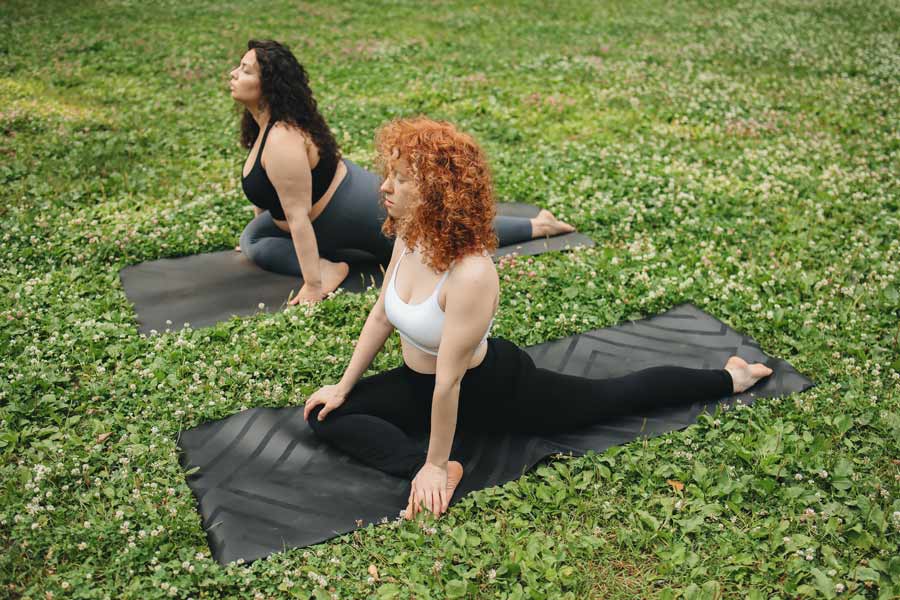As the warmth of summer gives way to the crispness of September, it’s the perfect time to take your mindfulness practice outdoors. Engaging in outdoor yoga and meditation amidst the tranquil beauty of nature can rejuvenate your mind, body, and soul. In this article, we’ll delve into the remarkable benefits of practising mindfulness in motion outdoors and offer practical tips to help you seamlessly integrate these practices into your daily routine.
The Power of Mindfulness and Meditation
In today’s fast-paced world, the importance of mindfulness and meditation cannot be overstated. These practices offer a profound escape from the constant buzz of technology and the demands of our busy lives. They provide a sanctuary of serenity where we can find solace, clarity, and renewed focus.
Benefits of Outdoor Mindfulness Practices
While yoga and meditation hold their own rewards, taking them outdoors amplifies their positive effects. Here’s why practising amidst nature is particularly beneficial for your health and well-being:
Connection with Nature: The symphony of rustling leaves, chirping birds, and the gentle caress of a breeze creates a multisensory experience that anchors you to the present moment. This deep connection with nature enhances the calming effects of mindfulness, allowing you to truly immerse yourself in the here and now.
Enhanced Mindfulness: Outdoor environments introduce novel sights, sounds, and scents that naturally engage your senses. These sensory stimuli serve as potent focal points for your practice, making it easier to stay grounded in the present and fully engaged in the experience.
Vitamin D Boost: Sunlight is a natural source of vitamin D, a crucial nutrient that supports bone health, immune function, and mood regulation. By practising outdoors, you’re nourishing your mind and invigorating your body with this essential nutrient.
Reduced Stress and Anxiety: Nature’s inherent tranquillity and beauty have a remarkable impact on stress reduction. Being surrounded by greenery and open skies can help lower cortisol levels, promoting a sense of calm and reducing anxiety. A study published in the “Proceedings of the National Academy of Sciences” [1] found that participants who took nature walks had reduced neural activity associated with brooding, a type of repetitive negative thinking linked to stress and depression.
Mind-Body Integration: Practicing yoga and meditation outdoors provides a seamless integration of mind and body. The gentle movements of yoga align with the natural world around you, fostering a sense of unity and flow and is associated with improved psychological well-being. A review published in the “International Journal of Yoga” [2] highlighted the positive effects of yoga on mood, stress reduction, and overall quality of life.
Heightened Awareness: Nature encourages a heightened awareness of your surroundings. This acute awareness translates to your mindfulness practice, helping you to observe your thoughts and emotions with greater clarity and non-judgment. Research, like a study published in the “Journal of Environmental Psychology,” [3] has shown that practising meditation outdoors can enhance feelings of vitality and increase positive emotions.
Cultivating Resilience: Just as nature evolves through changing seasons, your outdoor practice fosters resilience and adaptability. As you embrace the elements, you gracefully strengthen your ability to navigate life’s changes.
Finding Your Peaceful Spot
Selecting the right location is essential for a successful outdoor mindfulness practice:
Local Parks: Seek out nearby parks or green spaces that provide a peaceful setting. Look for shaded areas or open fields where you can lay down a mat or sit comfortably.
Waterfronts: Lakesides, riverbanks, or even the beach can offer serene backdrops for your practice. The sound of water adds an extra layer of tranquillity.
Forest Clearings: If you’re fortunate to live near a forested area, find a quiet clearing where you can connect with the soothing sounds and scents of the woods.
Your Backyard or Garden: If outdoor spaces are limited, your own backyard can serve as a convenient and private sanctuary for your practice.
Incorporating Outdoor Practices into Your Routine
Make outdoor mindfulness a regular part of your routine with these actionable tips:
Set a Schedule: Designate specific times for your outdoor practice, whether it’s early morning, during lunch breaks, or in the evening as the sun sets.
Unplug: Leave your devices behind or set them to aeroplane mode to fully disconnect from digital distractions.
Mindful Walking: Incorporate mindful walking into your outdoor routine by focusing on each step, your breath, and the sensations around you.
Breath Awareness: Find a comfortable spot, close your eyes, and tune into the rhythm of your breath. Let the fresh air fill you with renewed energy.
Nature’s Props: Let the natural elements enhance your practice. Use a rock as a grounding tool, or listen to the rustling leaves as you meditate.
By integrating mindfulness and meditation with the healing powers of nature, you can rejuvenate your body and mind, find solace in the present moment, and nurture a profound sense of well-being. So, roll out your mat, find your peaceful spot, and let the September breeze guide you on a journey of self-discovery and inner peace.
References:




